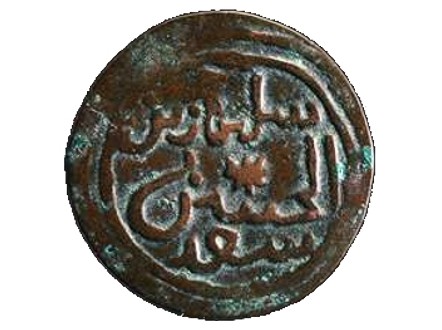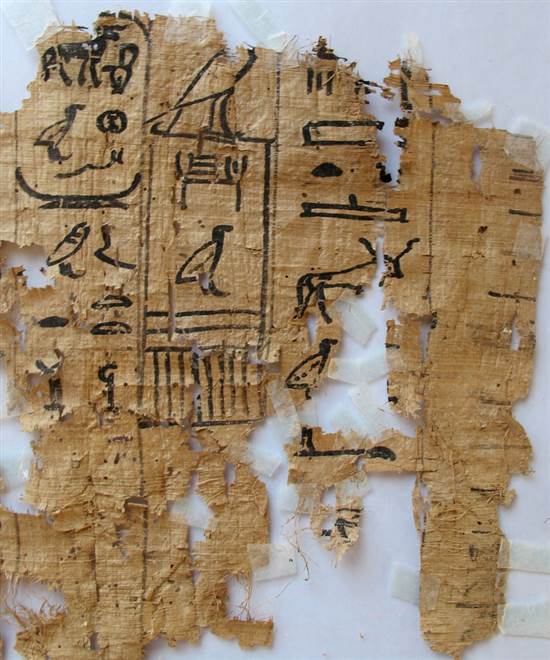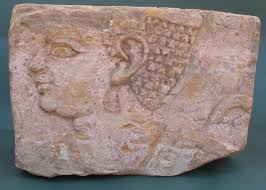Ancient African Archaeological Discoveries (2012-13)
 |
Area Where Ancient African Coins Found in Australia to be Surveyed
 |
Archaeologists are surveying the Northern Australian beach where five copper coins from Southeast Africa's Kilwa kingdom were discovered back in 1944. The results of the surveying could shed light on how the 12th century coins arrived. Read more.
World's Oldest Known Harbor in Egypt
 |
Remains of an ancient harbor built in the age of Suten Khufu (Fourth Dynasty, c. 2589-2566 BC) and several papyrus documents written in Medu Neter (hieroglyphs) were uncovered at Wadi al-Jarf, on the Red Sea in Egypt. According to archaeologists, this harbor predates any other in the world by over 1,000 years. The 40 papyri are written testimonies providing insight to the daily life in Khufu's 27th year on the throne, including a high-ranking official named Merrer's account of transporting limestone for the construction of the Great Pyramid. Read more.
World's Oldest Evidence of Use of Fire in South Africa
South Africa's Wonderwerk Cave has long been known for its impressive ancient artwork, but only recently for its historical significance. Boston University archeaologists unearthed soil from the site that was found to contain ashes dating to a million years or 200,000 years older than when fire was thought to have been used. Analyses suggest that fires were continuously used, and have fueled speculation about their use as a means of indoor heating, warding of animals and cooking. Read more.
35 Small Pyramids in Sedeinga, Sudan
The French Archaeological Unit is excavating the bases of 35 pyramids made mud and stone bricks near Sedeinga, along the Nile in Northern Sudan. The 200-year-old pyramids and inscriptions are thought to be the tombs of wealthy individuals, ranging in height from 3 feet for children to about 32 feet high for the wealthiest adults. Read more.
One of the world's oldest Sun Dials in Egypt's "Valley of the Kings"
 |
Basel University archaeologists uncovered a 3,300-year-old sun dial in Souther Egypt's Valley of the Kings. The obvious sundial is made from a flattened piece of limestone with black paint drawing of a sectioned semi circle (divided into 12 parts, 15 degrees each) and a hole for a stick. This discovery occurred near the site where the same team of researchers uncovered the tomb of Nehmes Bastet (see below). Read more.
Stone Towers and Painting in Dongola, Sudan
Remnants of a structure, including sandstone towers and walls, were uncovered by University of Warsaw archaeologists in Dongola, in Dongola, Central Sudan. In addition to this discovery, the team found part of a Christian painting with both Old Nubian and Greek inscriptions at a nearby church that dates from the 800s AD. Dongola is well known as a medieval Christian city and capital of Makuria. Read more.
Depiction of Noble Woman in Meroe, Sudan
 |
The 2,000-year-old depiction of a noble woman (possibly a queen, but since the headdress was damaged it is unknown) from a palace in Meroe, an ancient capital of Kush, was put on display at the Royal Ontario Museum. While archaeologists originally discovered it in fragments in 2007, it was only recently reconstucted. Read more.
2012
First Use of Poison on Earth in South Africa
Bordeaux University researchers uncovered the earliest known eveidence of the use of poison by humans in the Border Cave in the Lebomobo Mountains of South Africa. Dating to over 24,000 years, wooden measuring sticks found in the 1970s were recently analysed and discovered to contain evidence of castor beans, a poisonous substance that were applied to arrowheads in a similar way the San people use today. The poisonous substance would have aided hunters at more quickly killing their prey, making this the earliest example anywhere on earth of tactical hunting. Read more.
Ancient Jewelry, Pottery, Tools in Senegal
Floods helped uncover jewelry, pottery and tools that could date to between 2,000 and 7,000 BC. A Cheikh Anta Diop University reseracher found the artifacts while visiting a flood zone on the outskirts of Dakar, Senegal. Read more.
Temple of Amun at Jebel Barkal, Sudan Is Older than Originally Thought
University of Auckland researchers unearthed the foundations of a temple complex underneath another structure that was previously thought to have been built during the reign of Akhenaten (c. 1350 BC). The new find pushes back the dates of the temple to around 1550 BC instead, at the start of the 18th Dynasty under Ahmose I. Read more.
Temple, Tall Stele, Ancient Gold Mine in Gheralta Plateau, Ethiopia
A 20-ft stone stele with an Old Ethiopic or "Sabean" inscription and royal symbol, near a temple with stone columns and an ancient gold mine with a shaft on the Gheralta plateau in Ethiopia. The find helps verify stories in historical texts such as the Kebra Negast, Bible and Quran, that tell of the Queen of Sheba's (Makeda) visit to Jerusalem with large quantities of gold. Read more.
Kemetic Horemakhet ("Sphinx") in Tel Hazor, Israel
The discovery of fragments of a horemakhet ("sphinx") statute dedicated to Old Kingdom Suten, Menkaure, were found during excavations in Galilee. Menkaure was an 4th Dynasty (c. 2500 BC) suten who commissioned the smallest of the three great pyramids of Giza. The find serves as a stark reminder of Dynastic Kemet's influence in Palestine and beyond at the time. Read more.
Wooden Statue, Large Structure, Chapels and Animal Mummies in Abydos, Egypt
A rare wooden statue of a woman (believed to be Hatshepsut), a mud-brick building, separate offering chapels, and over 80 animal mumies were found by University of Toronto archaeologists in Abydos, a sacred city in ancient Kemet. The structures are believed to have been owned by a wealthy family and constructed as a monument on a ceremonial processional route where ancient Africans made pilgrimmages. Read more.
Temple Complex in Vad Bon Naga, Sudan
A team of Czech archaeologists from the Naprstek Museum rediscovered the remains of a temple near Vad Bon Naga, just north of Khartoum in central Sudan. The temple features images of both the lion-god, Apede-mak, and as statue of Osiris, and was likely built during the Meroitic period (900 BC-400 AD). Read more.
Tomb of Ancient Singer in Valley of the Kings
Basel University archaeologists stumbled upon the tomb and remains of Nehmes Bastet, a singer for Amun Ra, in the Valley of the Kings in Southern Egypt. The inscription located in the tomb shed light on the life of Nehmes, who lived during the 22nd dynasty (945-712 BC) and was the daughter of the High Priest of Amun. The location of the tomb brings to light the fact that not only the Valley of the Kings was not just where royals were entombed. Read more.
Continue >>
